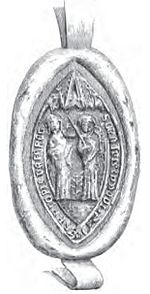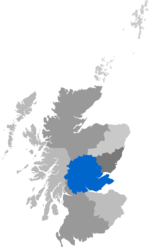South Inch

South Inch is a large public park in Perth, Scotland. About 31 hectares (77 acres) in size, it is one of two "Inches" in Perth, the other being the larger, 57-hectare North Inch, located half a mile across the city. The Inches were granted to the city, when it was a royal burgh, by King Robert II in 1374. Both Inches were once islands in the River Tay. The two Inches are connected by Tay Street. The park is bounded by King's Place and Marshall Place (both part of the A989, the latter named for Perth lord provost Thomas Hay Marshall) to the north, Shore Road to the east and South Inch View and South Inch Terrace at its southern extremity. Its western boundary abuts the rear of the homes on St Leonard's Bank, which was laid out by Perth architect William Macdonald Mackenzie in 1828. The north-south running A912 Edinburgh Road, opened around 1760, passes through the park's eastern third. The eastern side of the park is known as the Lesser South Inch.Two paths diagonally dissect the main part of the park. The start of the path that originates from the northwest corner, at the foot of King Street, is overlooked by a statue of Sir Walter Scott, author of The Fair Maid of Perth in 1828. The statue, a Category C listed monument, is the work of the Cochrane brothers, and was completed in 1845 as one of their final works before leaving for Canada. It was accidentally acquired by the city magistrates at the sale of a local sculptor's stock. The part of the statue of Scott's dog, Maida, was stolen in 2020. It was also stolen in 2016.Craigie Burn enters the inch at its southwestern corner, via a tunnel, after passing beneath the Highland Main Line railway. It then runs along the inch's southern edge before going underground and exiting into the Tay. The category C listed buildings at 1 and 2 St Leonard's Bank, currently occupied by the Parklands Hotel, overlook the Inch's northwestern corner.
Excerpt from the Wikipedia article South Inch (License: CC BY-SA 3.0, Authors, Images).South Inch
Marshall Place, Perth Upper Craigie
Geographical coordinates (GPS) Address Nearby Places Show on map
Geographical coordinates (GPS)
| Latitude | Longitude |
|---|---|
| N 56.3904 ° | E -3.4332 ° |
Address
Marshall Place
PH2 8AH Perth, Upper Craigie
Scotland, United Kingdom
Open on Google Maps









